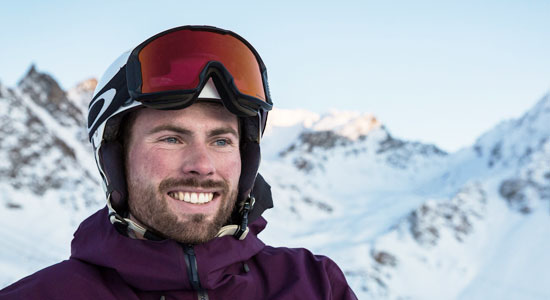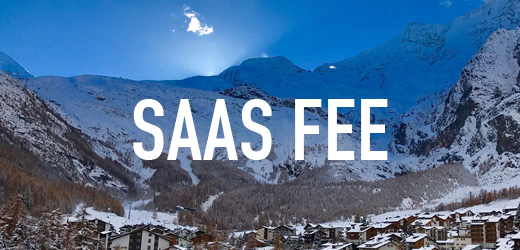EQUIPMENT ADVICE: SKIS & BOOTS 2023– 2024

PREPARING FOR YOUR COURSE
So, you’ve enrolled in the Peak Leaders GAP course.
And now it’s essential to prepare by getting your gear.
Whilst you might already have a nice collection of fat powder skis or twin tips for the park, these are not going to do the job for a professional ski course.
So please take the time to read this blog and do not hesitate to check with us if you’re not sure.
This is purely about the equipment that will help you pass – not hinder your performance.
THE EXPERT ADVICE
The right skis and boots are critical for your success in the BASI exams and your exam performance can be seriously hindered by poor, unsuitable, or ill-fitting equipment.
Too often, we see people turning up with the wrong gear and it just makes their life harder when it comes to meeting the standards required in the exam.
When this happens, in most cases people find it necessary to invest in new skis and/or boots – the kit required to pass your ski instructor exams is often very different from the equipment for holiday skiing.
BOOTS
Let’s start off with some ski boot recommendations.
Now, this is a difficult one to give specific recommendations that will be right for everyone, some boots are just not well suited to some people’s feet.
The key here is to get the right style of boot and the correct size/shape/width to fit your foot. As you will no doubt be aware, painful boots suck! Most people need to go and get the boot selected by a good boot fitter, and some people will need some adjustment and customisation.
Even if the boot fitter doesn’t need to stretch the shell, add bits of foam or cut away the liner, there is a lot of value in them selecting the right boot for you. Every brand has a different mould and within their range they will have different shell volumes and widths.
In other words, it is very difficult for you to buy boots online and achieve a good fit.
So get yourself down to your nearest ski store and let them guide you. But, just make sure you tell them you need a piste performance boot and also that you are booked on a ski instructor course.
GET THE FLEX RIGHT…
Advise them that you are looking for a boot with a flex in the range of 100-130 for men and 80-110 for women.
The heavier or taller you are, the more you need to moving to the higher end of those ranges.
They may guide you towards a race boot or a free-ride boot, please be firm here and tell them you need a piste performance boot only.
To give you a bit of an idea of the kind of boot models you’ll be looking for in the shop, below are some of the key models:
Lange boots
The Shadow or the LX (wider version) – the same for both women and men. The boot fitter will guide you to the correct width.
Nordica
Speedmachine or Sportmachine (wider version) – also the same for both women and men.
Tecnica
Mach 1 – this comes in a Medium Volume (MV) or High Volume (HV).
Salomon
S/Pro Alpha (narrower) or S/Pro (wider). As with all of the boots above, there will be a range of flex ratings available.
Atomic
Hawk Ultra (narrow fit), Hawk Prime (mid) or Hawk Magna (wide fit).
SKIS
Moving on, let’s take a look at some ski options.
As we mentioned in our pre-course information on your member’s area, you should have piste performance skis that are around chin to head height in length, no more than 80mm underfoot in width, with a turn radius of approximately 14-16m (this radius may be lower for shorter, women’s skis).
The reason for these strict dimensions is that you will need to be able to perform specific types of turn on the snow during your exams. These turns require us to use the edge of the ski really accurately and sometimes get quite big edge angles.
Having a narrower ski and also one with a 14-16m radius makes this much easier.
We’ve taken the time to curate a selection of skis suitable for your GAP course. But this isn’t an exhaustive list, so if you’re considering something different, please reach out to us to confirm its suitability.
All these skis have been chosen based on our extensive knowledge of the ski market, and our coaches have tested them at some point, so we can confidently say they’re the right tools for the job.
HEAD SUPERSHAPE E-SPEED / E-MAGNUM:
A slight change in graphic from last year, but still a firm favourite for the GAP course across the Alps.
It ticks all the boxes for the kind of skiing you will be doing on your GAP course, and we have also had quite a few past trainees who have taken these into level 3 training.
They come in a number of widths, but the ‘Speed’ or ‘Magnum’ are the best widths for performance piste skiing.
The Head Super joy is a slightly softer (more flexible) version of the E-Magnum, designed specifically for women. Then you have the Epic Joy and Power Joy for stiffer ladies options, which will be well suited to take you beyond the BASI L2 standard. This is ticking all the same boxes as the e-magnum, so all of the above applies. It just comes in some shorter lengths to better suit women.


Dynastar Speed ‘763’ or ‘563’ or E-Lite 7 / 9
The 763 has had a nice facelift for this coming season, these are another great choice for GAP courses, tried and tested by many previous Peak Leaders trainees.
Their new Hybrid core gives a nice balance between lightness and smoothness giving these a really nice feel on the piste.
The 763 has scope to take you beyond level 2 and onto your initial steps into level 3 training, if that’s something that might interested you.
If you’re a lighter build then the 563 will provide enough oomph in a slightly cheaper package.

Dynastar also designed a ladies specific option which has a slightly softer flex pattern, this is called the E lite. The E lite 8 is the softer version, while the E Lite 9 is stiffer, providing more stability for a faster skier or a heavier build.

Rossignol React Forza 50D / 60D:
Rossignol always produce good piste skis and the Forza is no exception, new for this year we have the option of the 50D or 60D.
(Sorry for all the random ski names here, a geeky ski designer clearly comes up with these names and they usually make little sense).
The 50D is slightly softer, so if you’re of a lighter build, then this will suit you better.

There is also another model called the Hero Elite MT which would suit someone planning on moving beyond level 2 and towards the level 3 ISIA qualification. Providing more stability at speed, but it does require you to be a little more on point with where you’re balanced for the ski to perform well.
The Nova 10 and Nova 14 are the women’s option from Rossignol, a really nice option designed specifically for women. If you are lighter and prefer slower skiing, the Nova 10 is the better of the two for you. The unisex Hero Elite MT is also the option to go for if you have ambitions of further training towards your level 3 in the future.

Salomon S/Max 12 / 10 / 8:
Salomon are our last choice in here, I wanted to include them as they perform well, they look good and they come in at pretty competitive prices.
The S/Max 10 and 12 are the options to go for here, under the same name for men and women, the 10 is the lighter weight version and the 12 has some more beef to support you at speed.
Then if you’re keen on moving further beyond the Level 2 qualification and your skiing is already strong (e.g. have previous race training experience), then the S/Race GS range would be a good shout.


All of the above are really good options that we know are suitable for this course, but there are others out there too.
You could look at Nordica, Blizzard, Volkl and they all have piste performance skis which will work well for the course.
These days, within the piste performance category, all of these big ski manufacturers make good skis which are suitable.
One last word of warning – make sure your don’t opt for the top of the range ‘piste performance’ or ‘race’ skis offered by these brands, as they are tough to ski well and will make your training more difficult.
I hope this gives you some clear goalposts for you choices this winter.
It’s a complex world and it’s really difficult to boil down all the choices into one blog.
But this is a strong starting point and if you aren’t sure please get in touch.
If you’re in the UK and near the South East, you should consider a trip to chat with Fluid Lines – where they offer special deals for Peak Leaders trainees plus you’ll almost always be talking to a fully qualified instructor who understands what you need for your course.
Meanwhile just click below for more about joining a Verbier course…










